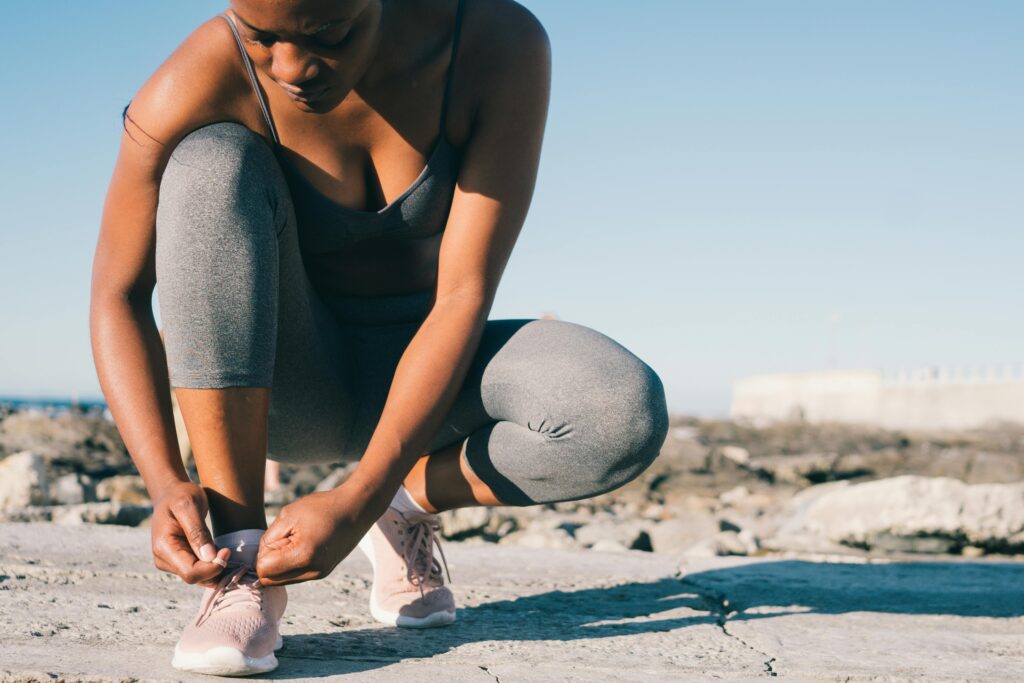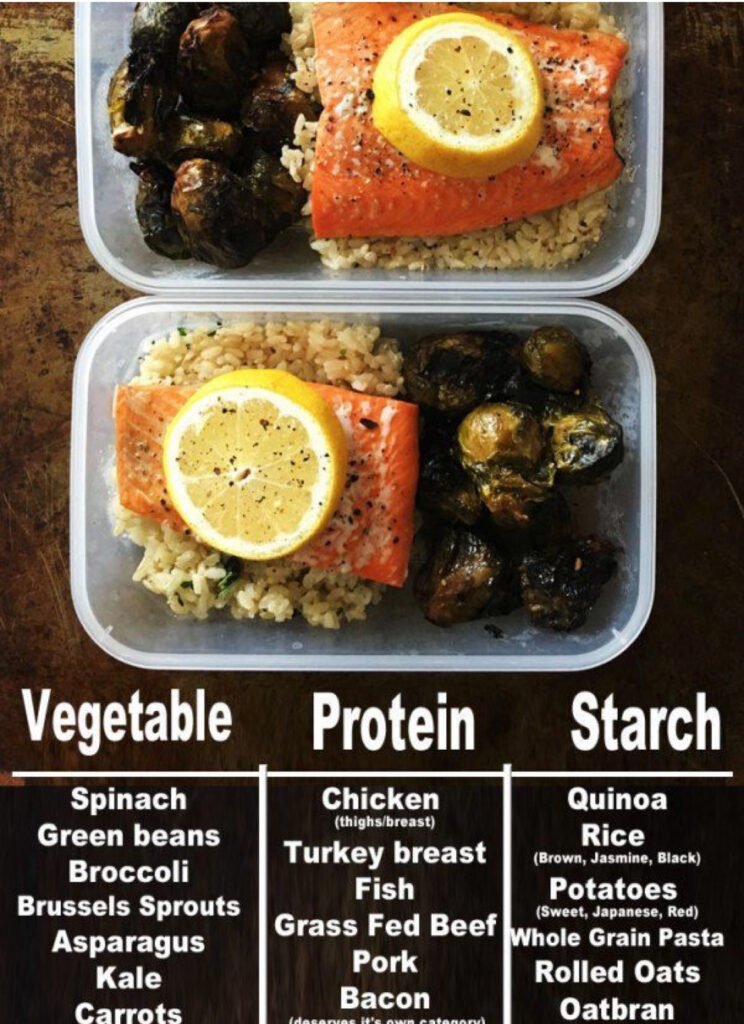9-Week Summer Workout Routine for Teachers
This post contains affiliate links, which means I may earn a small commission at no extra cost to you if you purchase through them. I only recommend products I truly love and think you’ll vibe with too. Check out our privacy policy and disclosure here.
A summer workout routine can transform those precious months off into your healthiest season yet. As the final bell rings and grades get submitted, many educators find themselves with something they haven’t had all year–TIME!
After nine months of putting students first, racing during passing periods to use the restroom, and surviving 30 minutes or less for lunch, summer break offers the perfect opportunity to focus on your own well-being.
The irony isn’t lost on most teachers—you spend your days encouraging students to grow and learn, yet finding time for your own fitness goals during the school year feels nearly impossible at times.
Between grading papers, reaching out to parents, and managing classroom chaos, exercise often becomes another item on an already overwhelming to-do list.
However, summer changes everything. Those long days suddenly become yours again, and the stress that keeps your shoulders permanently hunched begins to melt away.
This nine-week plan recognizes that teachers are real people with real lives, not fitness influencers with unlimited time and energy.
You won’t find unrealistic expectations or complicated routines that require expensive equipment here.
Instead, you’ll get a straightforward approach that works around summer commitments like family vacations, part-time jobs, or continuing education courses.
Summer Workout Routine Considerations for Teachers
Teaching takes a unique toll on your body and mind. Throughout the school year, you’re constantly on your feet, yet paradoxically sedentary for long periods while grading, planning, or meeting.
Your eating schedule revolves around 30-minute lunch breaks, often resulting in stress eating or skipping meals entirely.
Meanwhile, the mental exhaustion from managing multiple personalities daily can make the thought of a workout feel far-fetched and unattainable.
Summer presents both an opportunity and a challenge. On one hand, you finally have the mental space to focus on yourself. On the other hand, the sudden shift from rigid structure to complete freedom can leave you feeling lost about where to start.
Many teachers either go full throttle the first week of summer (only to burn out quickly) or fall into complete relaxation mode that leaves them feeling sluggish by August.
The key lies in understanding that your body and mind need time to decompress from the school year.
Rather than jumping into an intense fitness regimen immediately, this program eases you into healthy habits while still allowing for the rest and recovery you desperately need.
Summer Workout Routine Foundation: Building Your Base
Before jumping into specific exercises, it’s crucial to establish realistic expectations. Your summer workout routine should enhance your break, not become another source of stress. This means accepting that some days you’ll crush your workout, while others you might only manage a 10-minute walk. Both scenarios are perfectly acceptable and part of a sustainable approach.
Setting Up Your Summer Schedule
Start by mapping out your summer commitments. Perhaps you’re teaching summer school four mornings a week, or you’ve planned a two-week vacation in July.
Maybe you’re taking continuing education courses or working a part-time retail job. Write all of these commitments down and look for patterns in your free time.
Most teachers find that early morning or late evening workouts work best during summer. Early morning sessions help establish structure and leave the rest of your day free for spontaneous activities.
Evening workouts can be a great way to unwind, especially if you’ve spent the day doing any activities that don’t get your heart rate up.
Summer Workout Routine Equipment That Won't Break the Bank
One of the biggest barriers to summer fitness for teachers is cost. After spending your own money on classroom supplies all year, investing in expensive gym memberships or equipment feels overwhelming. Fortunately, an effective summer workout routine requires minimal investment.
A set of resistance bands costs less than $20 and provides endless exercise possibilities. These versatile tools take up almost no storage space and travel well for vacations.
Additionally, a basic yoga mat protects your joints during floor exercises and creates a designated workout space in your home.
Consider borrowing or buying used dumbbells from online marketplaces. Two sets—one lighter and one heavier—will serve you well throughout the program.
If budget is tight, water jugs or laundry detergent bottles work as temporary weights while you build the habit.
Weeks 1-3: Gentle Reentry Phase
The first three weeks focus on establishing consistency rather than intensity.
After months of high stress and irregular self-care, your body needs time to remember what movement feels like without the pressure of daily teaching demands.
Week 1: Rediscovering Movement
Start with 20-minute sessions, three times per week. This might seem too easy, but remember that you’re building a foundation for long-term success.
Each session should include five minutes of gentle stretching, 10 minutes of light cardio (walking, easy cycling, or intervals of walking and running), and five minutes of basic strength exercises.
Focus on movements that counteract the physical effects of teaching.
Gentle neck rolls help release the tension we unconsciously hold during stressful situations.
Shoulder blade squeezes combat the forward posture from hunching over desks and computers.
Hip circles and leg swings address the stiffness from standing and walking for hours.
During this week, pay attention to how your body responds. You might be surprised by how much energy you have without the constant mental drain of lesson planning and behavior management.
Alternatively, you might feel more tired than expected as your body finally allows itself to relax.
Week 2: Adding Structure
Increase your sessions to 25 minutes while maintaining the three-day frequency.
This week introduces a basic structure that you’ll build upon throughout the program.
Each workout now includes a warm-up, main activity, and cool-down period.
Your warm-up expands to include dynamic movements like arm circles, leg swings, and torso twists.
The main activity alternates between cardio-focused days and strength-focused days.
Cardio days might involve brisk walking, swimming, or if you have a gym membership–elliptical machines, rowers, and stair climbers.
Strength days introduce bodyweight exercises like modified push-ups, wall sits, and glute bridges.
The cool-down becomes more intentional this week. Instead of just stopping when you’re tired, spend five minutes doing static stretches that target the muscles you just worked.
This practice helps increase blood flow and creates a ritual that signals the end of your workout.
Week 3: Building Confidence
By the third week, 30-minute sessions should feel manageable. You’re still working out three times per week, but the content becomes more varied and challenging. This is when many teachers start to notice improvements in their energy levels and sleep quality.
Introduce interval training during cardio sessions. This doesn’t mean high-intensity sprinting—instead, try alternating between moderate and easy efforts.
For example, walk at a comfortable pace for two minutes, then increase to a brisk pace for one minute, repeating this cycle throughout your cardio portion.
Strength training becomes more comprehensive, targeting all major muscle groups throughout the week.
You might focus on upper body during one session, lower body during another, and core during the third. This approach ensures balanced development while preventing overuse injuries.
Weeks 4-6: Summer Workout Routine Intensification
The middle phase of your summer program builds upon the foundation established in the first three weeks.
You’re now ready for more challenging workouts while still maintaining the flexibility that makes summer special.
Week 4: Expanding Your Comfort Zone
Increase to four workout sessions per week, with each session lasting 35 minutes. This additional day allows for more variety in your routine and helps maintain momentum as you settle into summer’s rhythm.
Your fourth day can be dedicated to activities you genuinely enjoy. Many teachers find this is the perfect time to try something new—perhaps a hiking trail you’ve always wanted to explore, a swimming session at the local pool, or a bike ride around your neighborhood. The key is choosing activities that feel more like fun than exercise.
Strength training becomes more challenging this week. If bodyweight exercises were becoming too easy, add variations or increase repetitions.
Push-ups can progress from wall push-ups to knee push-ups to full push-ups.
Squats can be performed with a pause at the bottom or with arms raised overhead for additional challenge.
Week 5: Finding Your Rhythm
By now, exercise should feel like a natural part of your summer routine rather than an obligation. Week five maintains four sessions per week but extends each to 40 minutes. This extra time allows for more thorough warm-ups and cool-downs, which become increasingly important as workout intensity rises.
Introduce compound movements that work multiple muscle groups simultaneously.
These exercises are particularly valuable for teachers because they improve functional strength—the kind you need for lifting boxes of supplies, rearranging classroom furniture, or standing for extended periods.
Examples include squat-to-overhead press (if you have weights), step-ups with knee raises, or plank variations that incorporate arm movements. These exercises provide more bang for your buck and keep workouts interesting.
Summer Workout Routine Progress Assessment
Week six represents the midpoint of your summer transformation. You should notice significant improvements in stamina, strength, and overall energy levels.
This is often when teachers start receiving comments from friends and family about looking healthier and more relaxed.
Workouts remain at four sessions per week and 40 minutes each, but the intensity increases noticeably.
Cardio sessions might include longer intervals or slightly more challenging terrain if you’re walking or hiking.
Strength sessions incorporate more complex movements or additional sets.
This is also an excellent time to assess your progress. Take note of exercises that were challenging in week one but now feel routine.
Celebrate improvements in how you feel day-to-day—perhaps you’re sleeping better, have more patience with family members, or feel more optimistic about the upcoming school year.
Weeks 7-9: Peak Performance Phase
The final three weeks of your summer workout routine focus on maximizing the fitness gains you’ve built over the previous six weeks while preparing for the transition back to school.
Week 7: Embracing Challenge
Increase to five workout sessions per week, maintaining 40-minute durations. This additional session provides flexibility for weeks when you miss a planned workout due to summer activities or travel.
Having five sessions scheduled means missing one doesn’t derail your entire week.
Introduce more advanced variations of exercises you’ve mastered. If regular squats have become easy, try single-leg squats or jump squats.
Replace standard planks with side planks or planks with leg lifts. These progressions ensure continued improvement while keeping workouts mentally engaging.
Cardio sessions can now include more sustained efforts. Instead of primarily using intervals, try maintaining a challenging but sustainable pace for longer periods. This builds the cardiovascular endurance that will serve you well during those first few weeks back in the classroom.
Week 8: Consolidating Gains
Week eight maintains five sessions per week but focuses on perfecting form and maximizing the effectiveness of each movement. By now, you should have a clear understanding of which exercises you enjoy and which provide the best results for your body.
This is an excellent time to create circuit-style workouts that combine strength and cardio elements. For example, you might cycle through squats, push-ups, mountain climbers, and plank holds with minimal rest between exercises. These efficient workouts are perfect for teachers because they provide maximum benefit in minimum time.
Pay special attention to exercises that will help you transition back to teaching. Strengthen your core to support long periods of standing. Work on hip mobility to combat the effects of sitting during planning periods. Focus on upper back and neck exercises to counteract the posture problems that come with grading papers.
Week 9: Preparing for Transition
The final week of your summer workout routine serves as a bridge between vacation fitness and school-year reality. Maintain five sessions per week, but begin experimenting with shorter workout times that might be more realistic once teaching resumes.
Practice fitting exercise into a more structured schedule. Try working out at the time you’ll need to exercise during the school year—perhaps before school starts or immediately after dismissal. This helps establish patterns that will serve you well when your time becomes more limited.
Focus on creating a sustainable routine that you can maintain even when lesson planning and grading consume your evenings. This might mean accepting shorter workouts or fewer sessions per week, but the habits you’ve built over nine weeks will continue serving you throughout the school year.
Nutrition Support for Your Summer Transformation
We all know that exercise alone won’t deliver the results most teachers want from their summer transformation. While a lot of work happens in the gym, much of your body transformation happens in the kitchen.
Summer’s relaxed schedule provides an excellent opportunity to establish healthier eating patterns without the stress of school-year meal planning.
Breaking the School-Year Eating Cycle
Many teachers develop problematic eating patterns during the school year out of necessity rather than choice.
Skipping breakfast or eating a quick, unhealthy, sugary “something” because you’re rushing out the door, eating lunch in 15 minutes while supervising students (or meeting about one), and stress-eating while completing electronic workforms becomes normal.
Summer offers a chance to reset these patterns.
Start by establishing regular meal times. This simple change can dramatically improve your energy levels and support your exercise goals.
Aim to eat breakfast within an hour of waking, have lunch at a consistent time, and avoid eating dinner too late, which can interfere with sleep quality.
Focus on adding nutritious foods rather than restricting everything you enjoy.
Teachers often feel deprived enough during the school year—summer shouldn’t feel like another source of deprivation.
Instead, try to include a serving of vegetables with most meals, choose whole grain options when possible, and stay adequately hydrated.
Meal Planning for Busy Teachers
Even during summer, teachers often juggle multiple commitments. Batch cooking and meal prep can help maintain healthy eating habits without spending hours in the kitchen daily. Choose one or two days per week to prepare larger quantities of staple foods.
Cook a big batch of quinoa, brown rice, or sweet potatoes that can be used throughout the week. I tend to buy these packages of Uncle Ben’s Jasmine Rice–enough for the week.
Nowadays, you can buy fresh vegetables prewashed and chopped for immediate use. Therefore, all you have to do is prepare protein sources like grilled chicken, salmon, hard-boiled eggs, asparagus or broccoli in quantities that will last several days.
Having these building blocks ready makes it easy to throw together nutritious meals even when summer activities keep you busy.
A grain, a protein, some vegetables, and a simple dressing create countless meal combinations without requiring extensive cooking skills or time.
Summer Workout Routine Sustainability and Motivation
Motivation naturally fluctuates during a nine-week program, especially when you’re not dealing with the external structure that the school year provides. Understanding this and planning for motivation dips helps ensure long-term success.
Creating Accountability Systems
Teachers are accustomed to being accountable to administrators, parents, and students, but summer removes these external motivators. Creating personal accountability systems helps maintain consistency when motivation wanes.
Consider finding a workout partner among your teacher friends. Many educators struggle with the same summer fitness goals, and having someone to meet for walks or share workout videos with can make a significant difference. If in-person partnership isn’t possible, virtual accountability through text check-ins or social media posts can provide similar benefits.
Track your progress in ways that feel meaningful to you. This might be as simple as marking workout days on a calendar, taking weekly photos, or keeping a journal about how exercise affects your mood and energy levels. The key is choosing tracking methods that motivate rather than stress you.
Adapting to Summer's Unique Challenges
Summer presents challenges that don’t exist during the school year. Travel disrupts routines, social gatherings often center around food and drinks, and the lack of structure can make it easy to skip workouts. Planning for these challenges helps you navigate them successfully.
Before traveling, research options for staying active at your destination. Many hotels have fitness centers, and most locations offer opportunities for walking, swimming, or hiking.
Pack resistance bands or download workout videos that require no equipment. The goal isn’t to maintain your exact routine while traveling, but to stay active in whatever way feels manageable.
Social situations require similar flexibility. Attend the barbecues and pool parties that make summer special, but look for ways to make healthier choices when possible. Offer to bring a dish that aligns with your nutrition goals, focus on socializing rather than just eating, and remember that one indulgent meal won’t derail nine weeks of progress.
Building Habits That Last Beyond Summer
The most successful summer workout routines are those that create lasting change rather than temporary improvements.
As August approaches, start thinking about how to maintain your progress when the demands of teaching return.
Transitioning Back to School
Let’s be honest, the transition from summer break back to teaching is tough.
Suddenly your time isn’t your own, stress levels increase, and self-care often becomes secondary to lesson planning and classroom management.
Planning for this transition helps preserve the gains you’ve made.
Begin reducing workout frequency or duration in the final weeks of summer to match what you realistically can maintain during the school year.
It’s better to do three shorter workouts consistently than to plan for five longer sessions that you can’t sustain.
Identify the minimum effective dose of exercise that helps you feel your best.
Perhaps it’s two 20-minute strength sessions and one longer walk per week.
Maybe it’s daily 10-minute yoga routines that help manage stress. Whatever it is, make this your non-negotiable baseline for the school year.
Leveraging Your School Environment
Many teachers don’t realize that their school environment offers opportunities for staying active. Taking the stairs instead of the elevator, parking farther from the building, or walking the track during lunch breaks can add significant movement to your day.
Consider organizing walking meetings with colleagues or starting a before/after-school exercise group for teachers. Many educators want to stay active but struggle with motivation and time management. Creating a supportive community at your workplace benefits everyone involved.
Use your students as motivation for staying healthy. Teachers who prioritize their own well-being model important life skills for their students. When you take care of yourself, you have more energy and patience for the demanding work of education.
Summer Workout Routine Success: Your Path Forward
Your nine-week summer transformation represents more than just physical changes—it’s about reclaiming your well-being and establishing patterns that support both your personal health and professional effectiveness.
Throughout these weeks, you’ve proven that despite the unique challenges teachers face, consistent self-care is both possible and essential.
The habits you’ve built this summer will serve you well beyond the classroom.
The strength you’ve developed will help you lift boxes of supplies without strain.
The cardiovascular fitness you’ve gained will give you energy for those long parent conference nights.
Most importantly, the confidence you’ve built in prioritizing your own needs will help you maintain boundaries that protect your well-being during stressful school periods.
Remember that progress isn’t always linear, and perfection isn’t the goal. Some school years will allow for more exercise than others, and that’s perfectly normal.
The foundation you’ve built this summer provides a framework you can return to whenever life allows, whether that’s during winter break, spring break, or next summer.
As you prepare to return to the classroom, carry with you the knowledge that investing in your own health isn’t selfish—it’s essential.
Teachers who take care of themselves are better equipped to care for their students, manage classroom challenges, and find joy in the profession they’ve chosen.
Your summer workout routine was just the beginning of a lifelong commitment to being the healthiest version of yourself, both for your sake and for the countless students whose lives you’ll continue to impact.
















2 Comments
[…] 9-Week Summer Workout Routine for Teachers […]
[…] the week, we trained with cardio and resistance training. I was teaching group fitness classes at the time, so we had that part […]